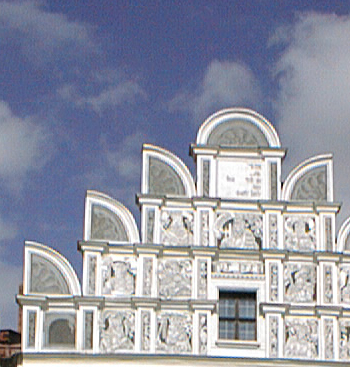Based on junkyardsparkle's pre-processing (I cropped the sample in order to fit 1:1 /when upscaled/ to page) I've tried to employ 10 various upscaling methods (including very exotic ones) to find out which one would cope with the weird Epson PhotoPC 600 pixel rendering best. The samples are upscaled to 200% as requested with no further post-processing.
The following results are ordered from the worst (up) to the best (down) by my own personal preferences.

10. SmartEdge 1.2 demo employing NEDI and fractal sharpening produces usually excellent results on downsized images but completely fails here producing very unnatural lined edges.

9. EANBQH - exact Area image upsizing with Natural BiQuadratic Histosplines - an upscaling algorithm with results usually a bit sharper than Lanczos a=3 fails here, too.

8. Image Analyzer - Fractal Interpolation PlugIn, Fractal9/XinLi - fractal interpolation based on Wiener filter, surprisingly almost the same results as 9.

7. Fractal Imager from Iterated Systems (1996) was a fractal image compression program (once quite famous) offering decompression to different images sizes. AFAIK the algorithm was later transformed into Genuine Fractals (see below). Still not very cool results and a visible loss of details.

6. BenVista PhotoZoom Pro demo seems to produce "ultra-smooth" edges on regular downsized images but doesn't help much here.

5. Yuval-Fisher quad-tree fractal image compression sample from 1990's modified (by me) to upscale pictures by decompressing to higher resolutions. Better than 7. - details are preserved better but some artifacts are also present.

4. Gimp Bicubic implementation - the weird lined edges seem to be partially suppressed.

3. Image Magick with Gauss filter - even smoother but a bit blurry.

2. Genuine Fractals 4.1 (an old version) - now Perfect Resize. This is already acceptable. The images are sharp while their edges are almost smooth and without weird lines.

1. Gimp Lanczos3. A very surprising winner! The edges are really smooth while the sharpness is acceptable.
As a conclusion, Gimp Lanczos3 seems to be the best option for this particular image. The results indeed don't look like from a current high resolution camera but when displayed on a larger screen it's better than relying upon an image viewer fast scaling.




















